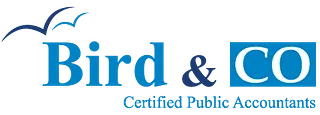16/03/2021 by Pete Bird 0 Comments
SEISS grant for new traders
New traders denied SEISS grant where no reply received by HMRC
Individuals who started their business in 2019/2020 need to provide additional evidence to HMRC in order to claim the self-employed income support (SEISS) grant, but complying won’t be easy for all.
HMRC is writing to up to 100,000 self-employed traders asking them to confirm their identity and prove they have been trading before they can claim fourth SEISS grant. If the trader does not respond adequately to HMRC they won’t get the grant.
Only taxpayers who started trading as a self-employed business after 5 April 2019 will receive the SEISS verification letter from HMRC and we understand that only part of that group will be contacted.
Those new traders can claim support under the SEISS for the first time if they submitted their 2019/2020 tax return by midnight on 2 March 2021.
Risk of fraud
As the next two SEISS grants will be wholly or partly based on the profits reported in the 2019/2020 tax return, fraudsters have worked out that submitting a false return could result in a cash payment of up to £15,000 (maximum £7,500 for each grant).
ATT Technical Officer Emma Rawson commented: “It is understandable that HMRC have concerns around fraudulent claims and the potential for tax return data to have been manipulated to maximise grants.”
This is why the tax authority is asking new traders in particular to complete a pre-verification check.
Seven steps to claim
To complete the pre-verification check and to access the next two SEISS grants the taxpayer will have to complete all of these steps:
Step 1: Open the letter
Receive and read the HMRC letter which should arrive between 10 March and mid-April. The list of genuine HMRC contacts has recently been updated to include reference to the SEISS letter to first time tax return filers, so this might provide some comfort to taxpayers that the HMRC letter should not be ignored.
Step 2: Answer call from HMRC
Up to two weeks after the letter is sent an HMRC officer will call the contact number given on the taxpayer’s 2019/2020 tax return. If the agent’s number was shown as the contact point HMRC will ask the agent to pass on their client’s telephone number.
The taxpayer needs to answer HMRC’s call although it will be shown as coming from an “unknown number”.
HMRC will make only three attempts to call between 8.00am and 5.30pm. If none of those three attempts are successful the taxpayer will have failed the pre-verification. It is therefore essential that HMRC has the taxpayer’s correct telephone number.
The taxpayer can correct the number held by HMRC by calling: 0800 024 1222. This number is only set up to update taxpayers’ telephone contact details; the call-handler can’t deal with further queries about the SEISS.
Step 3: Supply email address
When the taxpayer does speak to HMRC they must confirm or supply their email address. They must also agree to receive a link to a Dropbox account to that email address.
Step 4: Find email from HMRC
The taxpayer must receive and open an email from HMRC that includes the Dropbox link. This is another point where the system could break down, as the HMRC email could easily be automatically sent to the taxpayer’s junk folder.
Step 5: Digital copies
The taxpayer needs to make digital copies of a form of their ID (eg their photo-card driving licence, or current passport) plus three months of their UK business bank statements from 2019/2020. This information is needed to demonstrate that the new business has been active in 2019/2020.
If the business has been run without a UK bank account HMRC will accept other documents, but the taxpayer must agree what is acceptable in their call with HMRC.
Step 6: Upload documents
Taxpayer has only two days to upload the digital copies of their ID and bank documents to the HMRC Dropbox. After two days the Dropbox link will expire and the taxpayer will fail the pre-verification.
Step 7: Apply for the grant
The online portal to apply for the next SEISS grant will open in late April, HMRC hasn’t confirmed exactly when. All the above steps need to be completed before the taxpayer attempts to claim the SEISS grant. Tax agents cannot claim SEISS grants on behalf of their clients.
Profession has concerns
The ICAEW Tax Faculty anticipated that digitally excluded taxpayers and many others will have difficulty completing these verification checks. The Tax Faculty is in discussions with HMRC about how these checks can be made more inclusive and how taxpayers can be reassured if they receive the phone call from HMRC before the letter arrives.
The accountancy profession has some concerns over the type of data being requested and the timescales for supplying it, and has raised these points with HMRC.
Looks like a scam
Without prior warning from their accountant many traders will dismiss the HMRC letter and/or HMRC phone call as a sophisticated scam to obtain their ID and bank details.
Loading documents to a Dropbox account will look particularly suspicious to the inexperience taxpayer, who will have little prior contact with HMRC if the 2019/2020 tax return is the first one they will have submitted.
It is also highly likely that scammers will copy this procedure to launch attacks on many genuine businesses.
Rebecca Cave writing in AccountingWEB
.
.
.
end

Comments
Leave a comment